Introduction
In an era where business agility and innovation are paramount, the concept of a blended workforce (or hybrid workforce) has emerged as a revolutionary strategy. The approach, based on the combination of the strengths of full-time employees, freelancers, contractors, etc., is reshaping the competitive landscape across industries. According to an article in Forbes, it entails a strategic fusion of diverse talent pools. Leveraging it, companies are not just enhancing their operational flexibility and access to specialized skills but are also optimizing costs and fostering a culture of diversity and expertise. This is helping them to swiftly adapt to market changes, scale their operations dynamically, and maintain a competitive edge.
Contract versus full-time work: Three perspectives
Embracing a hybrid workforce model has surpassed being an ordinary or emerging trend. It has steadfastly turned into a strategic imperative for achieving resilience, innovation, and sustained success in today’s fast-paced business environment. Before we delve into the intricacies of managing such a diverse workforce, let us understand the key difference between contract and full-time work.
Full-time work typically offers financial stability, benefits like health insurance, and job security with fixed working hours and paid time off, but may have less flexibility and control over work. Contract work, on the other hand, offers flexibility, the ability to choose projects, and potentially higher earning capacity, but comes with drawbacks such as no benefits, paid time off, and higher tax bills due to self-employment taxes.
For individuals considering their career path, navigating the differences between full-time and contract work is essential for making informed career decisions. They can then match their work arrangement with their personal needs, be it stability and benefits from full-time roles or flexibility and autonomy from contract opportunities. It also helps in aligning career choices with long-term goals, lifestyle preferences, and financial planning, ensuring a more satisfying and sustainable professional life.
For staffing recruiters, too, understanding the growing trend towards a blend of full-time and contract work is crucial. It enables them to offer more tailored staffing solutions that meet the evolving needs of businesses and the workforce. Recognizing this trend helps recruiters to better match candidates with roles that fit their career preferences and lifestyle choices, thus improving job satisfaction and retention rates. Recruiters can also leverage the awareness to position as strategic partners who can advise clients on structuring their workforce for optimal flexibility, efficiency, and competitiveness in the market.
For those at the organizational leadership level, understanding the shift is crucial for strategic workforce planning and maintaining a competitive advantage. It not only enables businesses to rapidly adapt to fluctuating market demands but also facilitates access to specialized skills and innovation, essential for driving growth. Companies that understand and leverage this shift can better align their talent strategy with business objectives, optimizing operational costs and enhancing workforce flexibility. Moreover, it underscores the importance of fostering a dynamic and adaptable organizational culture that can attract and retain top talent in various arrangements, ensuring the company’s resilience and long-term success.
Rise and growth of blended workforce: Factors fuelling the trend
Acceptance of contractual work is growing globally, as reflected by the October 2023 statistics on contingent workforce management from Verified Market Reports, a global consulting and research firm. According to projections, the worldwide contingent workforce management (CWM) market is expected to clock a CAGR of about 13% over 2020-2027 to USD 8,764.2 million.
CWM, a method for handling a company’s non-permanent labor, focuses on tracking, managing, and optimizing the use of contractors and temporary workers. It helps in streamlining sourcing, management, and payment processes for a more flexible and responsive workforce. Growth in the global CWM market is driven by the need for workforce analytics, the adoption of new business models, and the benefits of workforce management (WFM) solutions, alongside the push for cost optimization and the use of technology. However, challenges such as rising solution costs and a shortage of skilled professionals are hindering market growth.
Another attestation to growth is the rising freelancer numbers. According to September 2023 data collated by Exploding Topics (a platform that showcases rapidly growing topics), there are nearly 1.57 billion freelancers in the global workforce, with the total freelance platform market estimated at $3.39 billion. Freelancing is increasingly becoming integral to the general workforce as it can help accomplish a substantial amount of work remotely.
McKinsey Global Institute says that online talent platforms could amplify global GDP by $2.7 trillion and enhance job outcomes for 540 million individuals by 2025, underscoring the transformative impact of freelancing on the global economy and organizational structures. The anticipated growth reflects a profound shift towards a blended workforce, where freelance expertise is strategically employed alongside traditional employment, marking a significant departure from previous operational models to a more strategic engagement of on-demand talent.
Growth in the hybrid workforce model, characterized by a mix of full-time employees and external contributors, is driven by multiple critical influences that address contemporary business challenges:
- Business complexity and uncertainty: Today’s business landscape is marked by rapid innovation and complexity, necessitating a versatile talent pool. Economic downturns have historically pushed individuals to explore freelancing as a viable work alternative.
A blended workforce empowers organizations to navigate this landscape by facilitating the management of geographically dispersed teams and ensuring the timely delivery of projects. It merges the stability provided by full-time employees with the specialized skills and flexibility of external workers, enabling businesses to maintain a competitive edge in innovation and project execution.
- Flexibility and agility: Companies increasingly need to tap into a global network of skilled professionals on an as-needed basis. The changing business dynamics and operational requirements are feeding the corporate appetite to outsource certain tasks.
A blended workforce model enhances organizational flexibility, allowing companies to swiftly adjust to fluctuating demands. Elimination of geographical constraints enhances agility, enabling organizations to tackle emerging challenges without being hindered by traditional employment boundaries.
- Access to a wider talent pool: Incorporating both full-time and external workers, organizations can access an expansive range of skills and expertise, far beyond what a solely full-time workforce can offer. The unique skills and knowledge that freelancers bring to the table has elevated their status within business operations.
Moreover, diversity in talent fosters a more dynamic problem-solving environment and stimulates innovation by bringing together varied perspectives and capabilities.
- Cost efficiency: The strategic use of external workers enables businesses to adjust their workforce based on current needs, significantly reducing fixed labor costs. Engaging external talent for specific projects or during peak periods helps in managing budget more efficiently, without compromising the ability to deliver high-quality outputs.
- Technological advancements: The proliferation of digital tools and platforms has made remote work more feasible, facilitating seamless integration of external workers into existing teams. Technological developments support the blended workforce model by making collaboration across distances more effective and efficient.
- Changing societal attitudes: Shifts in societal views towards work, particularly the growing preference for flexibility and autonomy, align well with the blended workforce model. Younger generations, especially Millennials and Gen Z, prioritize meaningful work and flexibility, driving the growth of freelance and gig work as preferred career options. It, therefore, caters to a range of work styles and preferences, appealing to those who favor traditional employment as well as individuals seeking more flexible or project-based roles.
- Pressure for organizational agility: In a highly competitive market, the ability to quickly adapt to changes is a vital organizational asset. A blended workforce offers scalability, enabling companies to respond to market fluctuations with agility—expanding or contracting their workforce in alignment with business needs.
Two pans of the weighing scale: Benefits and challenges of hybrid working
The very factors that define a blended workforce also stand as its primary benefits. The operational structure enhances organizational flexibility and efficiency, allowing for dynamic adjustments in staffing to quickly meet evolving business needs and access specialized skills on-demand. A hybrid workforce model facilitates scaling in alignment with demand fluctuations, offering a strategic edge. The cost savings are notable, as contingent workers often do not receive traditional employment benefits, enabling organizations to manage salary expenses more flexibly. Moreover, the ability to employ remote contingent workers reduces the need for physical office space, lowering operating expenses. Access to a global talent pool and a diverse array of skills promotes innovation, improves team loyalty, and retention, further illustrating how the intrinsic characteristics of a blended workforce directly translate into hybrid working benefits.
The substantial benefits of flexibility and access to a broad range of specialized skills are, nonetheless, weighed down by the challenges and complexities that come with managing such a diverse group of workers.
Ensuring seamless communication and alignment with organizational goals becomes complex with team members spread across different locations. The inclusion of independent contractors, freelancers, and part-time employees, while offering flexibility and specialized skills, leads to higher turnover rates and hourly costs. This dynamic can disrupt team cohesion and impact budget efficiency. Additionally, coordinating the diverse schedules of these workforce segments poses challenges for collaboration and meeting project deadlines. The variety of perspectives, although valuable for innovation, requires careful harmonization of work styles, expectations, and approaches through strong leadership and clear communication.
On the legal and compliance front, the complexity increases with the need to navigate different employment contracts, understand tax implications, and manage benefits packages appropriately. Cultivating a cohesive organizational culture amidst this diversity is essential but challenging, as it involves integrating varied work types into a unified culture that promotes a sense of belonging and shared purpose among all members of the workforce.
Knowing the hurdles is as important as being aware of the benefits. The challenges underscore the importance of strategic planning and adaptability in leveraging the advantages of a blended workforce while mitigating its potential drawbacks.
Strategies for building a blended workforce: Optimizing integration
Successfully blending contract and full-time employees is key to the efficiency of the hybrid workforce model. Adopting strategic practices can mitigate challenges and enhance team dynamics. Drawing on the insights of credible and well- researched articles, such as those by HBR, here are some refined strategies for effective integration:
- Recognizing diversity in workforce dynamics
Understanding varied motivations: Recognize that contractors and full-time employees may have different motivations and professional backgrounds. A nuanced understanding allows for tailored management approaches that respect individual expectations and contributions.
Setting clear expectations: Clearly define roles, responsibilities, and expectations for all team members from the outset to prevent confusion and ensure accountability.
- Fostering inclusion and enhancing communication
Active inclusion of contractors: Ensure contractors are integrated into team meetings, communications, and project discussions. Their inclusion not only enriches the project with diverse insights but also strengthens their engagement and contribution to team goals.
Collaborative pairing: Encourage partnerships between contractors and full-time employees. This strategy promotes a sense of belonging among contractors, facilitates knowledge exchange, and enhances team cohesion.
- Providing benefits and acknowledging contributions
Extended professional benefits: Offer contractors access to select company benefits, such as professional development courses or team-building events, to improve their engagement and loyalty.
Public recognition: Equally celebrate the successes and contributions of both contractors and full-time employees. Public acknowledgment fosters a culture of appreciation and unity.
- Ensuring equitable treatment with legal awareness
Equity and access: Provide equitable treatment and access to resources for all team members, including availability of training programs, reinforcing a fair and supportive work environment.
Legal and classification awareness: Maintain a clear distinction between contractors and full-time employees to avoid legal complications related to employment laws and benefits. Regularly review employment classifications and adjust management practices to stay compliant with labor laws.
- Continuous feedback loops
Establish mechanisms for regular feedback from both contractors and full-time employees to continually refine integration practices and address any issues proactively.
- Cultural alignment
Cultivate a shared culture that values diversity, inclusivity, and collaboration, reinforcing a unified identity among all team members.
- Technology and tools
Leverage technology to facilitate seamless communication and collaboration, especially important for remote or hybrid teams.
Consult the experts: Hiring the services of a staffing and recruitment agency, such as VBeyond Corporation, which offers specialized Contract Staffing services, focusing on industries like Technology & Digital, Life Sciences, Healthcare, and others, can be a strategic move when looking to build a blended workforce. These agencies specialize in sourcing a diverse pool of candidates with a wide range of skills and expertise, enabling organizations to fill gaps in their workforce quickly and efficiently. Leveraging their extensive networks and recruitment expertise, staffing agencies can identify and attract talent that not only meets the specific job requirements but also fits the company’s culture and values. Furthermore, staffing agencies handle the administrative burden associated with recruitment processes, such as screening, interviewing, and conducting background checks, which saves time and resources, allowing companies to focus on their core operations.
Conclusion
The blended workforce, encapsulating a dynamic mix of full-time and contractual talent, stands at the forefront of modern business strategies. Focusing on the hybrid workforce model, organizations are unlocking unparalleled flexibility, scalability, and access to a global talent pool.
Given the primary benefits of hybrid working—ranging from operational efficiency and cost savings to innovation and enhanced team loyalty—companies are increasingly gravitating towards it as they look to navigate the complexities of today’s market. Interestingly, the hybrid working benefits are not just theoretical advantages, but these are also the tangible factors driving the pickup in hybrid workforce across industries.
By prioritizing prompt and effective integration of the two types of workforces, businesses can harness the full potential of a hybrid workforce. By doing this, they will not just align with the evolving expectations of the modern workforce but also set a new standard for operational excellence and workforce management.
“If everyone is moving forward together, then success takes care of itself.”
~ Henry Ford.


